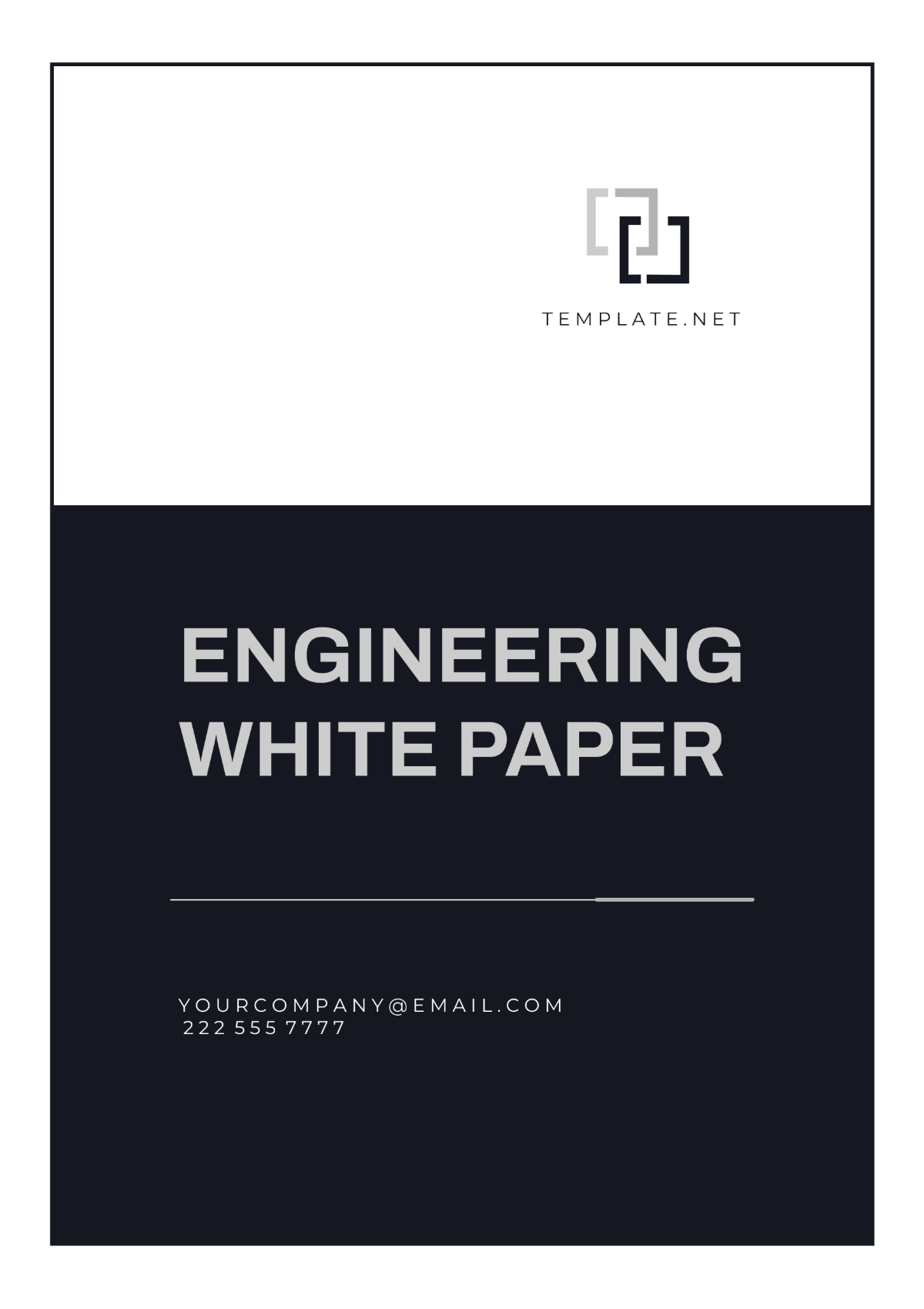Free Engineering White Paper

I. Introduction

In the modern world, engineering serves as the backbone of technological advancement and societal progress. From the construction of skyscrapers to the development of cutting-edge medical devices, engineering disciplines play a crucial role in shaping the world around us.
Purpose
The purpose of this White Paper is to delve into the diverse field of engineering, exploring its various disciplines, emerging technologies, and the challenges and opportunities it presents. By understanding the latest trends and innovations in engineering, organizations can harness the power of technology to drive growth and innovation.
II. Overview of Engineering Disciplines
A. Civil Engineering
Civil engineering encompasses the design, construction, and maintenance of infrastructure essential for modern society. Projects range from transportation systems to water treatment facilities, each requiring meticulous planning and execution.
B. Mechanical Engineering
Mechanical engineering focuses on the design and manufacturing of mechanical systems and components. From automotive engines to robotics, mechanical engineers apply principles of physics and mathematics to solve real-world problems.
C. Electrical Engineering
Electrical engineering deals with the study and application of electricity, electronics, and electromagnetism. It covers a broad range of areas, including power generation, telecommunications, and computer hardware.
III. Emerging Technologies in Engineering
A. Artificial Intelligence and Machine Learning
Artificial intelligence (AI) and machine learning (ML) are revolutionizing engineering processes by enabling automation, predictive analytics, and decision-making. Engineers leverage AI algorithms to optimize designs, improve efficiency, and reduce costs.
B. Internet of Things (IoT)
The Internet of Things (IoT) connects physical devices and sensors to the internet, enabling data collection, analysis, and control in real time. In engineering, IoT technology is used for monitoring infrastructure, managing resources, and enhancing safety and efficiency.
C. 3D Printing and Additive Manufacturing
3D printing, also known as additive manufacturing, allows engineers to create complex geometries and customized components with ease. This technology offers advantages such as rapid prototyping, cost-effectiveness, and design flexibility across various industries.
IV. Case Studies
A. Sustainable Engineering Solutions
Case Study 1: [Your Company Name] implemented sustainable engineering practices in the design and construction of a LEED-certified office building, reducing energy consumption and carbon emissions.
Case Study 2: The construction of a solar-powered water purification system in [Location] provided clean drinking water to underserved communities, showcasing the impact of sustainable engineering solutions on social welfare.
B. Innovative Engineering Designs
Case Study 1: The development of a lightweight and durable composite material revolutionized the aerospace industry, enabling the construction of fuel-efficient aircraft with enhanced performance and safety features.
Case Study 2: [Your Company Name] introduced a revolutionary robotic assembly line, increasing production efficiency and reducing assembly time by 50% in automotive manufacturing.
V. Challenges and Opportunities in Engineering
A. Global Challenges
Rising sea levels, aging infrastructure, and natural disasters pose significant challenges for engineers worldwide. Addressing these issues requires innovative solutions and collaborative efforts across disciplines and industries.
B. Emerging Opportunities
The rapid pace of technological innovation opens up new opportunities for engineers in areas such as renewable energy, smart cities, and biotechnology. By embracing emerging technologies and interdisciplinary approaches, engineers can tackle pressing global challenges and drive positive change.
VI. Future Directions in Engineering
A. Advanced Materials and Nanotechnology
The development of advanced materials and nanotechnology holds promise for creating stronger, lighter, and more durable materials with unique properties. Applications range from aerospace components to biomedical implants, pushing the boundaries of engineering innovation.
B. Robotics and Automation
Robotics and automation technologies are reshaping industries and transforming the way we work. From autonomous vehicles to robotic surgery, engineers are at the forefront of designing intelligent systems that enhance productivity, safety, and quality of life.
VII. Conclusion

In conclusion, engineering continues to be a driving force behind innovation and progress in the modern world. By embracing emerging technologies, sustainable practices, and interdisciplinary collaboration, [Your Company Name] can lead the way in solving complex challenges and shaping a brighter future for generations to come.
[Your Name]
[Your Company Name]
[Your Company Email]
[Your Company Number]
[Your Company Address]
- 100% Customizable, free editor
- Access 1 Million+ Templates, photo’s & graphics
- Download or share as a template
- Click and replace photos, graphics, text, backgrounds
- Resize, crop, AI write & more
- Access advanced editor
Introducing our Engineering White Paper Template, a comprehensive resource available on Template.net. Tailored for engineering professionals, it's fully editable and customizable to meet your specific requirements. With our Ai Editor Tool, crafting detailed technical insights and analyses has never been easier. Streamline your engineering documentation process and showcase your expertise with this versatile template.





























